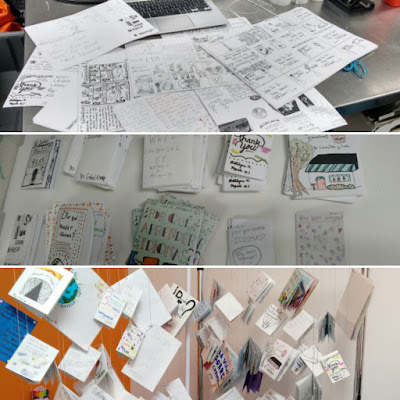At this year's most recent middle school dance, I asked the DJ to play this song. When it came on, the kids screamed and started flailing around. (As much or even more so than for the previous Whip/Nae Nae, if I might say with a fair amount of pride.) Seeing the kids dance and sing along in Spanish was one of my high points as a middle school teacher.
Here are some resources I have used with this song:
- Reading Activity (adapted from this article about Sarai, the girl in the video)
- Lyrics Training activity using Soy Yo (to sing karaoke or do a listening activity)
- Lyrics activity from Zachary Jones from his ebook, Cancionero 2015 - I use many of his activities (both free and purchased) and any of his ebooks have been well worth the money.
- Speaking of Zachary Jones, he has a great series of interviews called ¿Cómo eres? None with little Sarai yet, but one can hope. I used these as a somewhat independent listening activity and students liked them so much that I added it as an option to our monthly homework options.
- Another related song was Como soy by Manu Manzo, who does have a ¿Cómo eres? interview.
7th grade in particular has been a little obsessed with this song (I've caught kids singing it in the halls, and heard rumors that kids brought it up during some recent restorative circles in morning meetings.) I'm using some of that energy to kick off our 2nd trimester project about language & identity, connected with a skills unit on descriptions. More to come on that, hopefully.
Related resources bumping around in my files:
- Eres by Café Tacvba is another song I've used to introduce or review the conjugation of ser. Not quite as catchy as this one, but the kids still mention "that creepy black and white song.")
- A few years ago (in my first dabblings in PBL) I had students find a song of their choice and use the lyrics to search for targeted grammatical structures. Here's my first attempt at that mini-project, which I may revisit.
Big Picture: Grammar & music
I'm still struggling to balance PBL and proficiency, especially when it comes to grammar & conjugation, but using music is one thing that has been consistent through my evolution as a teacher. Songs were what kept our heads above water during my early years of treading water in Detroit, as I gathered a collection of songs that drove my K-2 curriculum and used music (including the only alphabet song I can stomach) to engage some of my most challenging middle school classes. As I learn more about project based learning and how to let students learn by doing, music has been a great resource for experiencing verbs in their natural habitat. If a song is catchy enough the grammar structures will stick in students' heads, and if it is repetitive enough it can allow for some "DIY" grammar rules based on observations of repeated patterns in a song.
Finally, anything that makes students spontaneously yell things in Spanish I'll count as a success in the complicated, often-grumpy land of middle school language teaching.
Finally, anything that makes students spontaneously yell things in Spanish I'll count as a success in the complicated, often-grumpy land of middle school language teaching.







